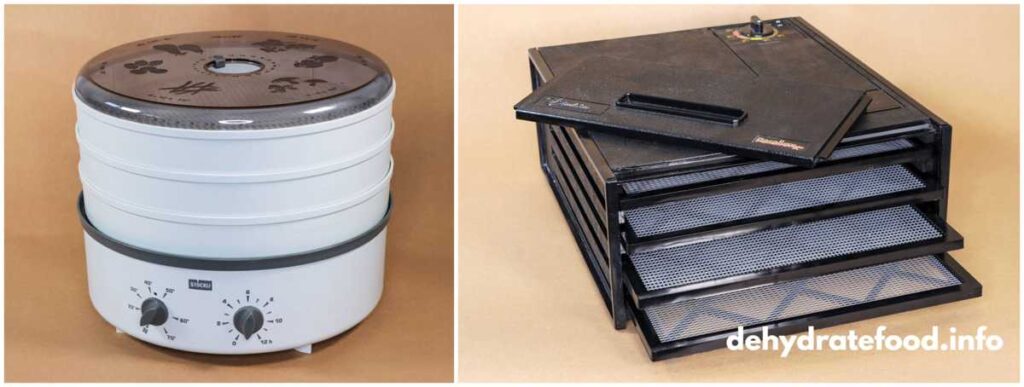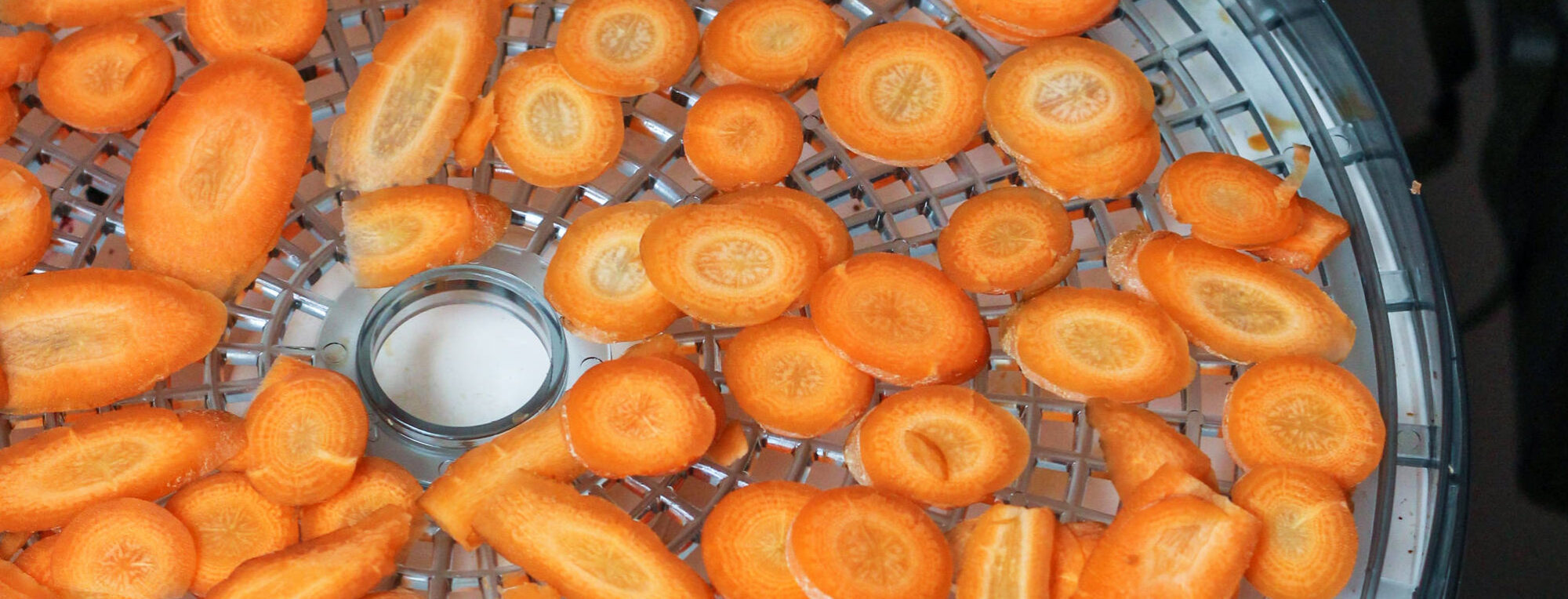CAN ALL FOODS BE DEHYDRATED?
In theory, yes.
Read more on what you can dehydrate
DO I NEED A FOOD DEHYDRATOR?
No, but it shortens dehyration time and the drying is more even.
Read more about dehydrators
HOW DO I CHOOSE A FOOD DEHYDRATOR? THERE ARE SO MANY MODELS ON THE MARKET
Read more about dehydrators

WHAT TEMPERATURE SHOULD I USE?
The temperature range for dehydrating food falls between 95°F (35°C) and 158°F (68°C). However, the specific temperature required depends on the type of food being dehydrated.
Read more
HOW DO I STORE DRIED FOOD?
Storing dehydrated food properly will help maintain its quality and extend its shelf life. Use airtight containers, remove excess air and store in a cool, dark place.
Read more
HOW MUCH DOES DEHYDRATED FOOD LOSE IN WEIGHT?
The weights of food after dehydration can vary depending on the type of food and the extent of dehydration. On average, food can lose up to 80-95% of its water content through dehydration.
Read more
HOW DO I BRING DEHYDRATED FOOD ON A HIKE?
Pack in a plastic bag or vacuum bag. Waterproof is key here.
Read more
HOW DO I REHYDRATE DRIED FOOD?
Use cold or warm water, and let soak until soft. When using cold water, food is less prone to bacterial growth, as bacteria grow in warmer conditions.
Read more
IS IT SAFE TO DRY MEAT?
Yes. Cooked meat is safe to dehydrate
Read more
IS IT SAFE TO DRY EGGS?
Cooked eggs are safe; raw eggs are not.
Read more
IS IT SAFE TO DEHYDRATE FISH?
Cooked fish is safe; fatty fish must be dried thin to be fully dehydrated.
Read more
TROUBLESHOOTING WHEN DEHYDRATING FOOD – click here to read more!



